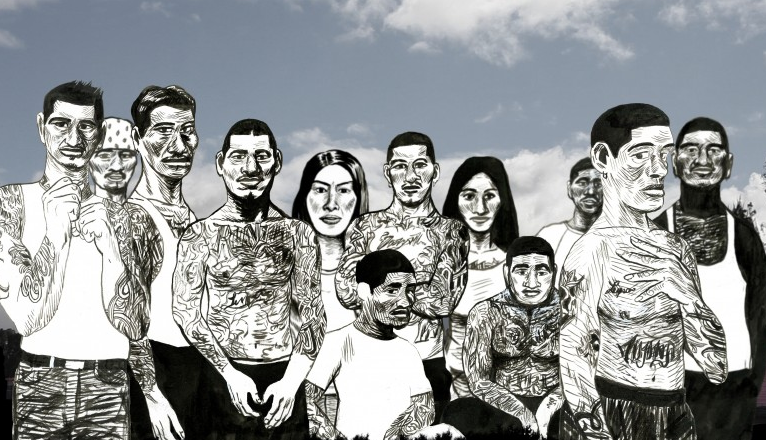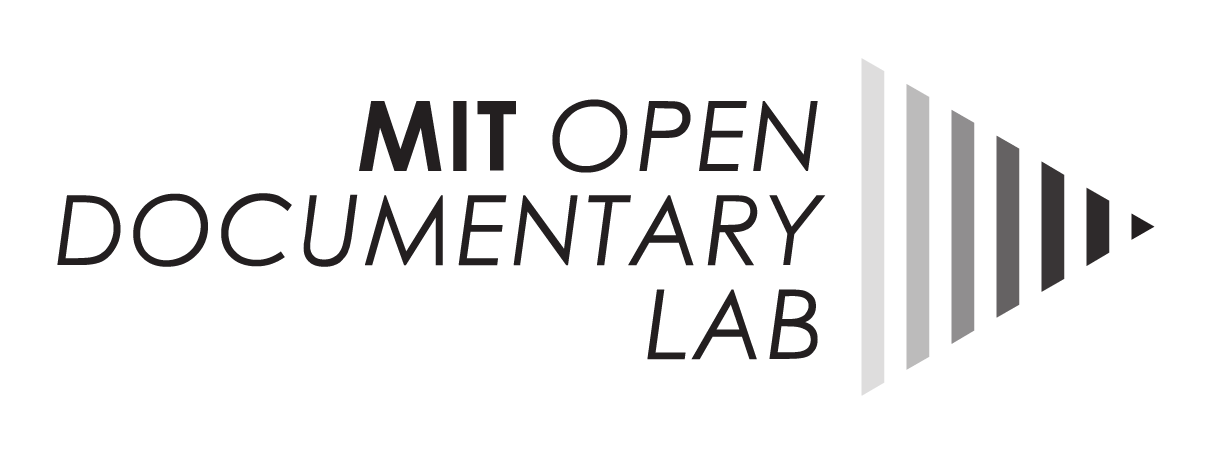
10 Jun Research Forum | William Uricchio on Playing with Narrative
The Open Documentary Lab is pleased to announce the Research Forum, a space for researchers to voice their opinions and test new theories. As part of our mission to promote the exchange of ideas about the new arts of documentary, we hope to encourage academic discussion and debate about these emerging forms by creating a place where researchers can develop ideas and interact with the field. The views presented here belong to their authors, and will necessarily take different forms. In the spirit of the documentaries we study, we look forward to community collaboration and exchange as the ideas explored in the Research Forum take root, grow and support the development of the field.
Playing with narrative
by William Uricchio, Principal Investigator, MIT Open Documentary Lab
Caspar Sonnen, director of IDFA’s DocLab, sometimes explains the difference between the traditional linear documentary and its interactive counterpart through the analogy of visiting a city. Nothing beats a great tour guide – someone knowledgeable about a location’s history and meanings, someone who can direct our attention to the many things we would not have otherwise seen, and someone who can tell great stories. On the other hand, we have all had the experience of wandering through cities on our own, and when we do, whether armed with knowledge or not, we attend closely to our environment, keeping an eye on addresses and landmarks (in the hope we can find our way back!), following our interests and desires, making unexpected detours and discoveries, and creating our own stories. It’s a useful analogy, as much because it makes clear that neither of these approaches is a threat nor inherently superior to the other. They offer different affordances, suit different needs, require different stances. And, I would argue, they both offer narrative engagements.
MIT’s Scot Osterweil uses a different analogy to make a related point. He distinguishes between the experiences of listening to a great storyteller and playing. In the first case, like the guided tour, we are led through experiences we would otherwise not have been privy to, abandoning ourselves to the craft of the narrator who leads us through the carefully plotted structure of the story. In the case of play[1], something many of us abandoned relatively early in life, we imagine, and indeed, co-create a world and its rules, inhabit a character, and have a goal that we share with our playmates. But we have no idea, as we play, whether the good guys will win or not. We don’t know what our fate will be. We simply improvise, inhabiting our characters and living the experience as it unfolds. Osterweil argues that this experience, like Sonnen’s example of wandering, is profoundly narrative in character. The difference is that Osterweil’s notion of play includes includes notions of character (including invented, fictional notions), rules that we must adhere to, and an arbitrary goal. As the Creative Director of MIT’s Education Arcade – a research lab that produces computer games for learning – Osterweil has a notion of play-as-narrative that unsurprisingly aligns with thinking in the game space, where story outcomes are unknown while the player navigates the diegetic world and its rules.[2]
This may seem an obvious point, but mainstream academic definitions of narrative draw a clear distinction between those events that, like the guided tour and told story, are ‘narrated’ versions of past or known events; and those that, like wandering on one’s own or playing, are indeterminate and simply part of life’s experiential flow. In a strict sense, no ‘teller’ of ‘past events’ means no narrative. And yet our experience while wandering or playing can seem as immersive, compelling, motivated and coherent as any story, and in the case of play, it explicitly contains many of the same features (character, setting, rules, and an ‘as if’ fictional world). This latter point, of course, brings its share of complications to the documentary, but as I will suggest, it also offers important ways to rethink the place of imagination in the domain of the non-fictional. But first, the problem of what constitutes a narrative.
The 1980s saw both the rise of computer games and the emergence of alternate views regarding narrative. Three broad strategies can be distinguished. The first more or less maintains the existing definition of narrative (‘the retelling of past events’), but redefines the player’s activity, with some narratologists arguing that the wanderer’s or player’s consciousness serves as an implicit internal voice and thus provides the ‘teller’ to just-experienced events, which are technically ‘past’ by time they are cognitively processed. A variation on this approach take such challenges as the ‘just-experienced’ problem and the indeterminate nature of conclusions, arguing that the narrative is what is constructed retrospectively, after the process is completed, as we remember and retell our experiences. A second strategy takes a more fine-grained approach, stepping back from a grand theory of narrative to focus instead on the micro-structures of narrative, the process by which questions are repeatedly posed and then answered in order to sustain viewer interest and move the overall narrative ahead. Rather than thinking of narrative as an overarching structure of the entire experience (whether Aristotle’s or Freytag’s ‘beginning, middle and end’), it can instead be understood as the building blocks of an experience, each with its own cycle of ‘exposition, transformation, and resolution’. Storytellers are quite adept at keeping us on the edge of our seats with this technique, interweaving mini-narratives as a means of establishing the characters, settings and events that will constitute the overall narrative. From this perspective, certain forms of the interactive narrative – such as the interactive documentary or interactive literature — simply disaggregate these ‘mini-narratives’ from one another, allowing the viewer to reassemble them in a manner that suits her interest. The basic DNA of the narrative – the sequence – stays intact, while the larger assembly process is open to user modification. A third and more radical approach argues that narrative is part of our psychological armature, a way of seeing, rather than a character of the text. Best known as cognitive narratology, here, narrative describes a way of encountering the world, an organizing experience, an existential gestalt.[3] Created and experienced on the fly, it is situational and does not have to await post facto retelling or the aggregation of mini-narratives in order to constitute a narrative experience. Rather, it manifests itself in the perception of coherence and linkage among experienced events. The various claims to support the interactive documentary’s narrative status can be found within this spectrum of arguments.
Of course, more than mere argument supports one or another of these approaches to narrative. Interactive documentaries come in many different forms, some of their textual structures adhering rather closely to long established narrative traditions; others, explicitly taking the form of mini-narratives that the user can move among and link; and still others offering rich if disaggregated possibilities to the motivated participant, who can connect the dots into a narrative experience. Some projects (Alma: A Tale of Violence [Miquel Dewever-Plana & Isabelle Fougère, 2012] is a strong case; Bear 71 [Jeremy Mendes & Leanne Allison, 2012], a weaker one) are essentially retellings of past events and lead inexorably to certain fixed conclusions, despite the fact that users may navigate multiple the routes to that end state. These forms share qualities of the traditional narrative (a definite story arc based on past events, a narrator), even as they encourage excurses and wandering. Others (Planet Galata – A Bridge in Istanbul [Florian Thalhofer & Berke Bas, 2010] and Question Bridge: Black Males [Johnson, Thomas, Smith and Sinclair, 2012]) require the user to wander and navigate at their own pace, exploring the spaces, characters and issues that they find interesting. The makers have made choices about what to include and offer structures to help shape and lend coherence to the user experience, but there is no preordained conclusion or story arc other than that conjured up by the user. Another, perhaps more extreme example may be found with 18 Days in Egypt (Jigar Mehta and Yasmin Elayat, 2012), which offers a database of crowd-sourced mini-documentaries, tagged with minimal metadata, so that users can follow a particular maker or topic. Although quite fragmented, coherence in this case emerges from the pro-filmic event (the 18 day long revolution whose symbolic centre was Cairo in 2011 and its aftermath) and the interface design, enabling motivated users to move among the many differently authored shards of still and video documentation and emerge with a rich multi-perspectival view. Like Question Bridge and Planet Galata, the onus is on the user to make sense of what is encountered; unlike them, the dispersed nature of the event coupled with the very different voices and styles of representation it includes (and the minimal metadata and guidance) requires greater levels of user motivation to work through the database.
The space between Sonnen and Osterweil’s analogies of ‘wandering’ and ‘play’ is a fruitful one as we consider the ongoing development of interactive forms. One of the reasons that some documentary makers – rather than fiction makers — have so quickly adopted these new techniques is that in many cases, users already know the neighborhood in which they will wander and play. Users’ preexisting familiarity with ‘reality’ provides ample context and motivation for them to explore interactive options and have them cohere as a unified and meaningful experience. In a fictional setting, by contrast, the diegetic frame must first be established before users can meaningfully wander around the story world – something we can see from game design. And in either case, the structure of the textual environment bears heavily on the nature of the user experience; just as the perception of narrative depends heavily on the user’s affect. Sonnen’s sense of ‘wandering’ makes great sense for non-fiction: we, the wanderer, are oriented, have some sense of our setting and go on to explore it. As stated, ‘reality’ provides a sufficient context and motive. By contrast, Osterweil’s notion of ‘play’, peopled with invented or assumed characters who are rule-bound by the conceits of the game, makes great sense for fiction. But it costs time and energy to establish these invented characters, to delineate the basic contours of the fictional world and its operating rules. The threshold for the ‘player’ would seem to be higher than for the ‘wander’. And yet, to restrict the player to fictional worlds would be to impoverish non-fiction, denying it imaginative and invented entry points and characters (as if a purely objectivist stance were even possible!).
We have only to look back on the ‘official history’ of our documentary tradition, which begins in ‘creative interpretation’, as John Grierson’s 1926 review of Flaherty’s Moana reminds us. Several generations of documentary historians jumped on the bandwagon, underscoring the point by simply dismissing as “naive” the hyper-realist renderings of cities, factory processes and peoples that dominated non-fiction from 1895 until the early 1920s, and embracing Flaherty’s story conventions. This is a troublesome view, not because of its acceptance of an expansive vocabulary and notion of imaginative engagement, but rather for its exclusion of a rich representational tradition rather akin to wandering, one, moreover, that stands as the culmination of several ways of seeing in the late 19th Century. That said, Moana’s invented characters, like Nanook’s before it and generations of documentaries after, remind us that the fiction / non-fiction divide is not quite as clean as some would like it to be. And Osterweil’s notion of the player goes one step farther, reminding us that meaningful invention need not only manifest itself in on-screen fictions, but rather can infuse our way of seeing as we walk through — and play in — a world. That is, rather than (like Flaherty) fictionalizing elements of the pro-filmic world in order to sharpen insights into its operations, being ‘in character’ allows us to bring a new vantage point to the world that we are exploring, to see it with new eyes, to engage it with an assumed agenda. One of the great potentials of interactive documentary is the flexibility that it affords the user to find her own way through a constructed environment. That one can do this ‘in character’ would seem to provide ways of discovering new aspects of the world, of engaging with it in fresh ways, rather than simply seeing the world through the eyes of the other in the form of the maker of a linear film. Instead, as in the act of playing (rather than listening to the story told), we have the opportunity to assume a set of instincts, to invent a viewing position, and to enact it, respond through it, and in the process, learn.
Today’s interactive documentary caters to the wanderer, and with wonderful effect. But it has an as-yet-underutilized capacity to address the player. For this to happen will require more than the efforts of documentary makers: we also have to do our part, and re-learn the art of abandoning ourselves to imagined roles, to the assumed rules and goals of a narrative conceit, and to ‘play’ our way through documentary environments.
Notes:
[1] There are, of course, many varieties of play; Osterweil’s reference is to character-based play.
[2] The appearance of computer games around 1960, and particularly interactive fiction games such as Zork in the late 1970s, signaled a new turn in traditional narrative forms. Interactive literature, emblematized by the work of the Electronic Literature Organization founded in 1999, and interactive ‘films’, rooted for example in the work of MIT’s Interactive Cinema Research Group in the late 1980s (or even earlier, in Raduz Cincera’s Kinoautomat at Expo 67), both attest to the relatively recent emergence of systematic developments in new forms of narrativity. However as Whitney Anne Trettien reminds us, one can find much earlier precedents, in Trettien’s case, going back to the 18th Century. See her Computers, Cut-Ups & Combinatory Volvelles: An Archaeology of Text Generating Mechanisms (Masters Thesis, Comparative Media Studies, Massachusetts Institute of Technology, 2009) http://whitneyannetrettien.com/thesis/
[3] For an overview, see David Herman, “Cognitive Narratology” The Living Handbook of Narratology [version from 13/5/2013] (http://wikis.sub.unihamburg.de/lhn/index.php/Cognitive_Narratology)




